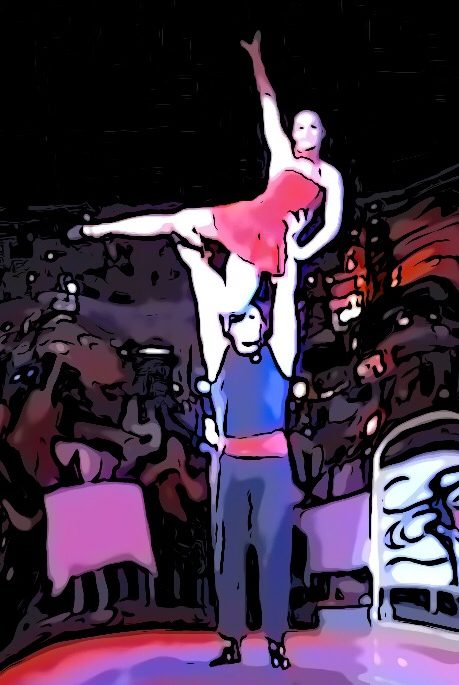The Lapiz (= pin) is a classic rond, with the peculiarity that the foot (like a compasses) keeps in contact with the ground while the knee always points forward. The Tanguer@ fondles the floor with the Lapiz. Depending on the dancers emotion, the heel, the flat foot or just the toes may be used. Whoever wants to exhaust all possibilities, should intensively deal with the Adornos (= ornaments).
Movement:
The Lapiz starts from the knee2knee position. Then the free leg is stretched and guided in a large semicircle around the body, and afterwards angled to end up again in the knee2knee position. It is important that both hip sides remain at the same height to maintain a stable axis.
In combination with a contra-rotating pivot a natural body counter movement (= dissociation) occurs. Upon dissolving this dissociation, the free leg is pulled back under the body, creating an additional angular momentum. If this impulse is utilized, the Lapiz culminates into an Enrosque. The Enrosque is usually accompanied by a partner’s Giro in the outer circle.
Music:
The Lapiz is a possibility to paint with the own feet and thus is more suitable for the legato in the music. By doubling the circular motion, however, the staccato can also be interpreted.
An accomplished Lapiz of the man appears as an invitation for the lady to grace the freshly wiped area with her presence. Therefore, the Lapiz should never seem rushed, even while dancing with a lot of energy. For me, stomping and jerky interpretations also do not fit the idea of the Lapiz.
Deutsch

